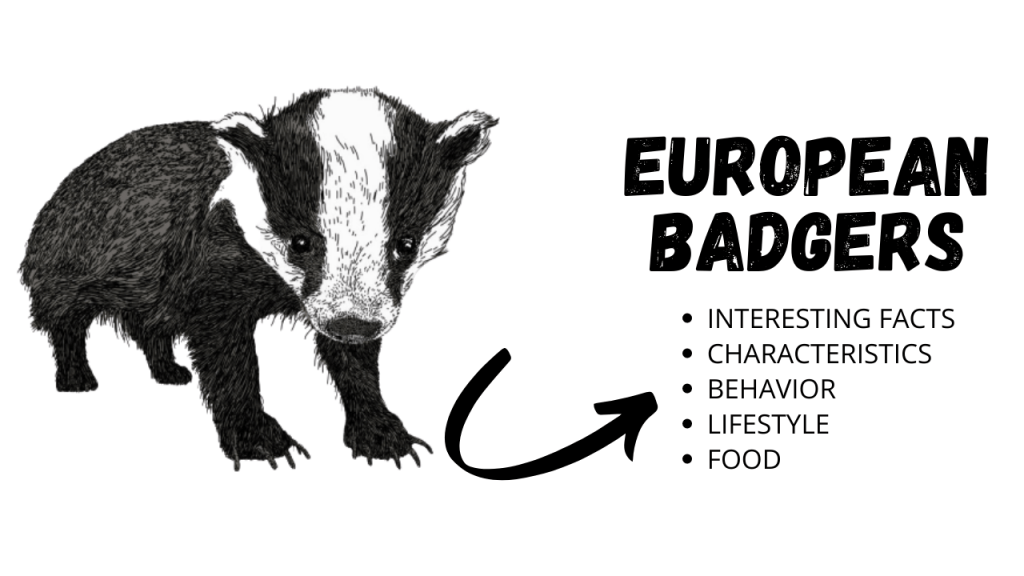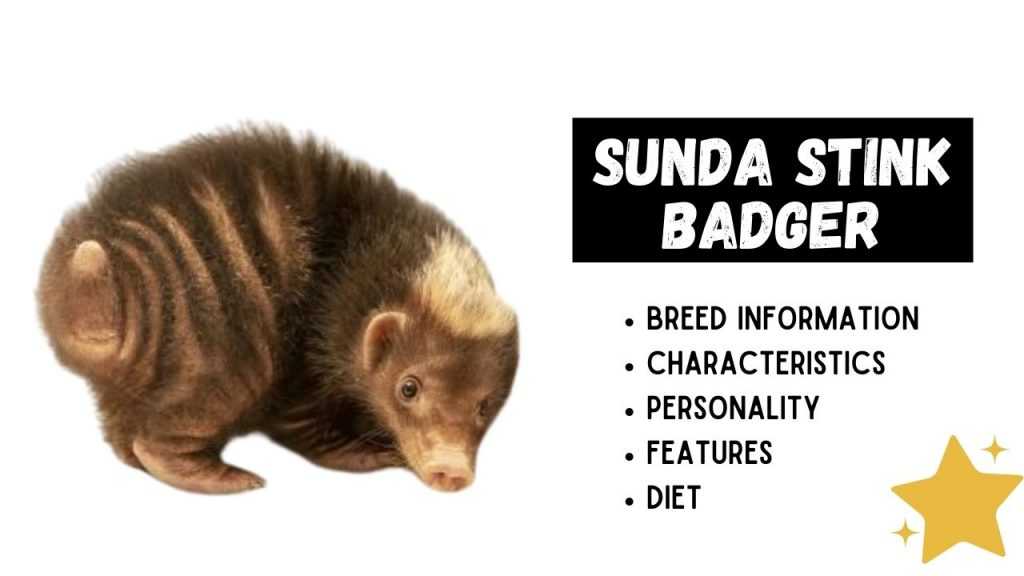The Honey Badger is an Omnivore animal that belongs to the family of weasels. Honey badgers are also known as ratels and are related to otters, ferrets, skunks, and other badgers like American Badger, European Badger, and Sunda Stink Badger. These badgers are named ‘honey’ for their habit of raiding beehives which they like the most to eat. They are also titled as the most fearless animal in the world, in the Guinness Book of World Records. The honey badger is the most dangerous badger among other badger species. Honey badgers have a strong muscular body, that is covered with thick fur, moreover has two hue fur on their body, which gives them a unique look.

Honey badgers are also well-known due to their attitude of bravery and courage. It has been given the title of the world’s fearless mammal because it doesn’t hesitate to attack animals that are much larger than him such as lions, leopards, hyenas, and crocodiles. The interesting fact about them is that being so small in front of all these animals, this badger still fights and is mostly seen winning. Even honey badgers are so ferocious and threatening, that some people’s deaths have been reported due to the honey badger attacks, and not even this they have also been spotted killing a Wildebeest. So don’t try to underestimate the honey badger by going on its size, behind all that fur he has serious power in it!
Physical Appearance
In appearance, a honey badger does not resemble a simple badger, they give a mixed appearance of a weasel and a badger instead. Honey badgers have a stocky flattened body with short robust limbs. Moreover, their low slung body comes up with small tiny ears, eyes, and nose, with long sharp claws and teeth. Its sharp claws help him for instant burrowing, while its long sharp pointed teeth can easily kill or harm an animal.
Its fairly long body has a thick rubber fur, which is mostly black with a wide gray-white stripe stretched across from the top of the head to the tip of the tail.
Size/Weight
They are the largest terrestrial mustelids in Africa. Adults are 23 to 28 centimeters (9.1 to 11.0 in) in shoulder height and 68–75 cm in body length, while females are smaller than males. Males weigh 12 to 16 kilograms (26 to 35 lb) while females weigh 9.1 kg.
Geographical Range/Habitat
Honey badgers are native to Sub-Saharan Africa from the Western Cape, South Africa, to Southern Morocco and southwestern Algeria. They are also founded in Arabia, Western Asia to Turkmenistan, Iran, India, Nepal, Afghanistan, and in Southern Pakistan.
They are adaptive to a variety of conditions, from cool mountains to warm rain forests to grasslands. They are also good at swimming and climbing trees.
Diet
Being omnivorous in nature, they are ferocious eaters – means they eat everything that comes under its paws. It feeds on honey, berries, honey bee larvae, roots, scorpions, eggs, snakes, tortoises, birds, and other mammals. They also consume ground squirrels, rats, mice, prairie dogs, pocket gophers, moles, kangaroo rats, bank swallows, and fish.
Territorial Range
Male honey badgers distinctively have a home area of around 200-500 square miles, while females have a home area of approximately 50-100 square miles. The whole of their territorial range depends on the availability of food.
Longevity/Lifespan
A Honey Badger can live up for 24 years in captivity. While in the wild they usually go up to 7-9 years approximately.
Behavior
Surprisingly, honey badgers are of solitary nature and don’t have strictly defended territories. Their territories have more loose boundaries and they mate up at their favorite foraging areas, where they sniff each other and go around to scent mark on the ground. Moreover, honey badgers are truly active animals, each day they walk for about 10-27 kilometers in search of food or to mark their territory.
Honey badgers spend most of their time burrowing. Digging is their favorite hobby. Their intensely sharp, long claws permit them to dig burrows through different soils up to 9 feet long and 5 feet wide. They utilize these setts for hunting, sleeping, hiding their prey, and in conceiving an offspring. Additionally, honey badgers aren’t afraid to use holes under the trees, rock crevices, old termite mounds, and dens or burrows made by other animals such as bat-eared foxes, cape foxes, aardvarks, and hares.
Surprisingly, Honey Badgers are of both Diurnal and Nocturnal behavior. In summer they adopt nocturnal behavior, which means they get active at night. In winter they shift to diurnal behavior, which means they get active in the morning.
Defensive Abilities
The honey badger is well-known due to its well ferocious defensive abilities. Along with sharp teeth, honey badgers also have amazingly strong jaws, that have enough strength to break down the turtle shell, and an unrelenting grip.
They have incredibly thick skin. Its skin is 6 millimeters (1/4 in) thick, an adaptation to fighting. This impressively thick skin can’t be pierced with arrows, machete, and even spears. Its thick skin is also loose and rubbery, which acts as a shield whenever it gets attacked or grabbed by a predator.
Honey badgers have a natural defense ability of not getting affected by many types of venoms and stings. 25% of their diet is on venomous snakes. They maintain that venomous diet due to their strong immune system. Furthermore, the honey badger can only get affected if bitten on the face by a highly cytotoxic puff adder, but after struggling pain for some time it gets fully recovered within five hours. The immunity of a honey badger gets stronger and stronger due to regular contact with small amounts of venomous scorpions, bees, and snakes.
Besides all these defensive abilities, honey badgers also have a stinky odor gland placed in their anal. They use a stinky odor to chase away predators. The stinky honey badger odor causes suffocation and helps calm bees when raiding beehives.
The black and white ‘warning’ (aposematic) coloration of the honey badger’s coat alerts predators to its chemical defense. If the ferocity of the badger or its chemical defense is not sufficient to put predators off, honey badgers will practice thanatosis (feign death). Predators often will not attack animals that are already believed to be dead.
Economic Importance For Humans
Honey badger’s hairs are used to make shaving/makeup brushes, while their fur is used to make floor coverings.
Fun Facts
- Honey badgers are omnivorous.
- They belong to the weasel family.
- Their real name is Ratel badger, but are called ‘honey badgers’ for their habit of raiding beehives.
- Honey badgers can be found throughout Sub-Saharan Africa to Western Cape South Africa and in most parts of Asia.
- Its fairly long body has a thick rubber fur, which is mostly black with a wide gray-white stripe stretching across its back from the top of the head to the tip of the tail.
- They are 23 to 28 cm in height and weight around 9 to 15 kg.
- Honey badgers are of both Diurnal and Nocturnal behavior.
- They usually love to spend most of their time alone and also hunt their prey alone.
- They can run at a speed of 30 km/h.
- They are considered the world’s most fearless animal.
- They have also been seen killing wildebeest and wear up from other big animals.
- They don’t get affected by venomous snakes bites and bees stings.
- Their tough skin is their major shield.
- They are a close look-alike of skunk.
How Are Honey Badgers So Powerful?
The honey badger’s skin thick and rubbery, nearly one-fourth inches in thickness and an additional layer of fats for added protection, making it mostly impervious to arrows, the low caliber of firearms and bullets, spears, machete, and injury from thick claws and fangs.
They are also flexible and could produce a foul odor. They are smart, and fearless creatures because they would go to the territories of lions, leopards, cheetahs, wild boars, rhinos, hippos, crocodiles, and even elephants.
Honey Badger vs Lion: Are Honey Badgers Indestructible?
Honey badgers are not indestructible. Their weak point is the neck which has the lowest layer of skin and fat. Honey badgers most commonly protect this part while the big cats specialize in taking the neck of their prey and breaking it. Big cats are also one of the most cunning species in the wild added to the fact that they are larger than Honey Badger. Though big cats most likely could kill a honey badger, there are some instances that a honey badger could kill a lion. Mainly if the lion was not careful in handling a Honey Badger. Unless very hungry or no other meal, lions would rarely hunt honey badgers because of the annoyance of hunting one and the fact that Honey Badger has more fur and fat than actual meat!
Other Badger’s We Have Reviewed:










